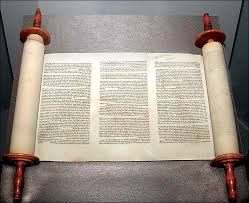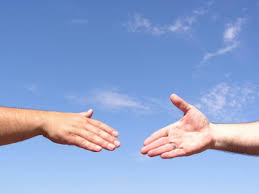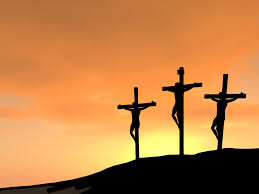Salvation and the Law of Reconciliation
What is the Law of Reconciliation? How was Yeshua Messiah’s crucifixion intricately tied to the Law (i.e., Father’s Torah)?
The process of atonement of sins used Laws in Torah that were vaguely understood and may have never been used before. These laws were written specifically for the crucifixion of Yahoshua under the Roman government. Though these laws were not well known understood, they were crucial to the fulfillment of the Passover sacrifice of the Lamb of God for our salvation. If these laws were not obeyed as Yahovah prescribed, then Yahoshua’s holy sacrifice would be in vain for the atonement of our sins and for the purpose of our reconciliation.

The Law
Lev 17:11 “For the life of the flesh is in the blood: and I have given it to you upon the altar to make an atonement for your souls: for it is the blood that makes an atonement for the soul.”
In the sacrificial Laws that Yahovah gave to Israel, He outlined the daily sacrificial offerings to be offered to Him during the Temple Services as temporary remedies for breaching their covenant relationship with Him, if they ignorantly committed sins. In keeping with his commands to offer the ceremonial sacrifices to Him, He gave them this law so they would understand why He required these offerings of blood sacrifices from them.

Then the apostle Paul taught:
“For I delivered unto you first of all that which I also received, how that Messiah died for our sins according to the scriptures; 4 And that he was buried, and that he rose again the third day according to the scriptures: (1Co 15:3-4 KJV)

Heb 9:22-28 “And almost all things are by the law purged with blood; and without shedding of blood is no remission.23It was therefore necessary that the patterns of things in the heavens should be purified with these; but the heavenly things themselves with better sacrifices than these. 24 For Christ is not entered into the holy places made with hands, which are the figures of the true; but into heaven itself, now to appear in the presence of God for us: 25 Nor yet that he should offer himself often, as the high priest enters into the holy place every year with blood of others; 26 For then must he often have suffered since the foundation of the world: but now once in the end of the world hath he appeared to put away sin by the sacrifice of himself. 27 And as it is appointed unto men once to die, but after this the judgment: 28 So Christ was once offered to bear the sins of many; and unto them that look for him shall he appear the second time without sin unto salvation.”
Who Performed the Sacrifice of the Lamb of God
- The first sacrificial offering Yahovah performed for mankind was in the Garden of Eden
It was for the sins of Adam and Eve just before He expelled them from His Garden. This was the sacrificial offering of the blood of animals, which served as a temporary covering for their sins, until He would send His own Son, the Lamb of God, to be the permanent atonement for their sins and the sins of their descendants.
- The second sacrificial offering Yahovah performed for mankind was Golgotha also known as Calvary
This place was outside the city gates of Jerusalem and was the place of capital punishment for criminals by crucifixion. This sacrifice was for the sins of the whole world and the offering was the blood of a righteous man, not the blood of animals. The blood of a sinless righteous man was the sacrificial offering that Yahovah desired for permanent atonement; not the blood of animals.
Law
Deut 21:23 Yahovah’s law to Israel was: “You must not leave the body hanging on the pole overnight. Be sure to bury it that same day, because anyone who is hung on a pole is under God’s curse. You must not desecrate the land the LORD your God is giving you as an inheritance.”
This law made it illegal to leave the crucified body on the cross/tree (Acts 13:29), until the next day. Here we must also remember that the new day starts at sunset. Therefore Yahoshua had to be taken down off the tree and buried the same day (Passover), before the new day (Feast of Unleavened Bread) started at sunset; otherwise, they would have broke God’s Law and be guilty of a sin because they would have desecrated the land if the body was allowed to stay on the cross/tree and not buried until sunset.
The Crucifixion and Passover
Only those criminals who had someone to claim the body were taken down and placed in graves. Yahoshua’s body was taken down and buried in a borrowed grave belonging to Joseph of Arimathea before the day of Passover ended at sunset (Matt 27:57-60).

Paul teaches us in Gal 3:23, “Christ redeemed us from the curse of the law by becoming a curse for us, for it is written: “Cursed is everyone who is hung on a pole.”

Recent Comments